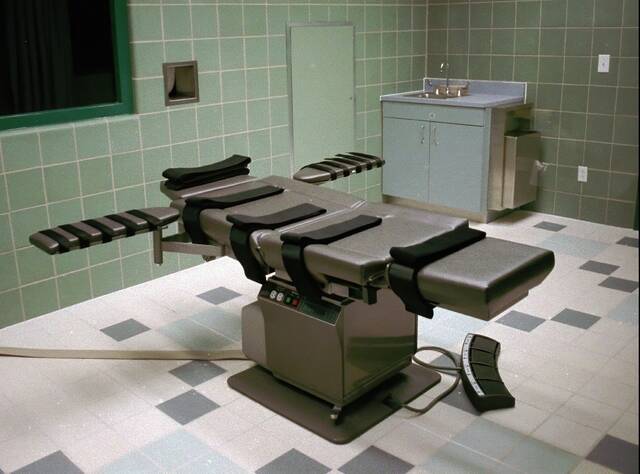Students who habitually log unexcused absences could be in for more than a trip to the district judge.
Instead, they might get a teacher-mentor, access to a licensed therapist or a home visit from a social worker — all steps that school leaders are taking in hopes of reversing a covid pandemic-fueled increase in truancy rates in their districts.
“Gone are the days you’re going to the magistrate and parents are getting fined,” said Jason Lohr, superintendent of Kiski Area School District. “There’s a lot more of an approach of really trying to get to the root cause.”
District judges still keep busy, but education experts and school leaders are coalescing around “restorative practices” as the best way to get kids back into classrooms. It’s a broad term, one the California-based nonprofit Learning Policy Institute, which focuses on improving education policy and practice, defines as supporting “reflection, communication and problem-solving skills for students and staff.”
On average, public schools in Western Pennsylvania reported about 17% of their students were habitually truant during the 2022-23 school year. That’s up from 8% in 2019-20, according to Pennsylvania Department of Education data.
To be considered habitually truant, a student must log six or more unexcused absences.
The consequences of missing too much school can go beyond bad grades. Research links absences to poor job prospects, adverse health outcomes and increased crime.
There’s no one-size-fits-all approach that districts can adopt to flatten the curve on an “attendance pandemic,” as education researcher Michael Gottfried calls it. But Gottfried, an economist at the University of Pennsylvania Graduate School of Education, is sure that “dragging kids and parents to court” isn’t the answer.
Taking Gottfried’s advice, superintendents from Apollo-Ridge, Riverview and Allegheny Valley school districts characterized referrals to the magistrate as a last resort.
“It’s hit or miss when they go to the magistrate,” Riverview Superintendent Neil English said. “You don’t want to put a family who might already be struggling with a host of different issues now into a legal position, where some of the issues that are actually causing the truancy compound.”
State influence
Pennsylvania has discouraged punitive approaches to truancy in recent years, updating its school code and providing an attendance toolkit through the state’s Department of Education.
Starting in 2017-18, districts were required to hold attendance improvement conferences for chronically absent students or refer them to county youth agencies. Parents or guardians as well as possible service providers are invited.
This conference can’t result in expulsion, suspension or reassignment to an alternative school for disruptive youth, and is a prerequisite for any court proceedings.
Even before those conferences happen, schools are encouraged to create “equitable, trauma-informed learning environments” that promote engagement with families, access to computer equipment as well as enriching clubs and activities.
Schools also are advised to consider barriers such as low parental supervision, health issues or student employment.
Matt Curci, superintendent at Apollo-Ridge, noted it’s not “as easy as creating a regulation or putting something on paper.”
“Getting to the heart of the matter and understanding what it will take students and families to improve in that regard is the key,” Curci said. “That has been the goal of the (state’s) emphasis and the development of Truancy Elimination Plans, but, even after going through those processes, it can still be an uphill battle.”
Results have varied from district to district, but new approaches promoting attendance seem to be making a dent.
Hempfield Area School District contracted with external groups to reverse a more than twofold increase in truancy during the pandemic. That includes Independence Health System in-school therapists and agencies such as JusticeWorks, a youth social services company based in Forest Hills.
Darci Markovic, social worker for Hempfield, said she would like these programs to accept even more students to lessen the burden on district employees like herself.
“We do rely on them a lot,” Markovic said. “(Slots) were filling up fast this year.”
Pittsburgh Public Schools is beginning to tamp down an approximately 44% spike in its truancy rate from 2020-21 to 2021-22. It contracts with agencies such as EveryDay Labs, an attendance solutions company out of California, which sends personalized messages to families of students who are chronically absent or at risk of becoming so.
Brownsville Area School District showed one of the largest year-over-year improvements in attendance in the 2022-23 data, which Superintendent Keith Hartbauer chalks up to restorative practices. In particular, end-of-day activity periods have been a big hit, mixing instructional time with teacher-led sessions on skills like fly fishing and improvisational theater.
Allegheny Valley School District still is waiting for a turnaround, with a truancy rate hovering around 27%. Homeroom attendance competitions and class breakfasts — an intervention that Gottfried said holds early promise — might help.
“We are trying to implement different school interventions to motivate students to come to school and overall improve attendance,” said Jan Zastawniak, Allegheny Valley School District spokesperson.
School rules
Even with updates to Pennsylvania’s school code, districts get substantial leeway in defining absences.
A student who repeatedly misses first period might not accrue absences in a district that doesn’t track total time missed. In a different district, that same student could be docked a fraction of a day each time he or she is late.
The decision to hold a student back also rests with school officials — who may or may not weigh absences — though parents can request their child repeat a grade. In Pennsylvania public schools, about 31,000 students repeated in 2022-23.
Adding another wrinkle to tracking absenteeism, data on any given district’s habitual truancy rate may be misleading, making it even more complicated to measure the impact restorative practices are having compared with, or alongside, punitive measures.
After districts sign an accuracy certification statement for their truancy numbers, the state Department of Education, in effect, takes their word for it, said department spokesman Taj Magruder.
That may have led to Plum Borough School District reporting a nearly 80% increase in truant students between 2021-22 and 2022-23, data that Assistant Superintendent Denise Sedlacek called an “error.”
The school code does not provide any penalties for improper reporting, Magruder said.
Underlying causes
Despite the focus on keeping kids out of court, six-term District Judge Cheryl Peck Yakopec said about 100 families come through her office each year for truancy hearings, mirroring the number of visits before the pandemic.
Yakopec, who presides over cases in Lower Burrell and Allegheny Township areas, said there’s “teeth that come with going to court and possibly paying a fine or even going to jail.” She can fine parents up to $300, but she said nothing motivates change like the inconvenience of a truancy hearing.
Particularly with younger students, more complex cases have popped up following years of remote or hybrid learning, when it was much more challenging to instill the discipline needed for regular attendance. The day before speaking with TribLive, Yakopec held about a half-dozen hearings for families with children in first, second and third grades, she said.
“Those people were still struggling to get (their children) to understand that, yeah, this is what you do,” Yakopec said. “But luckily, it’s fewer and fewer.”
Other top reasons for missed days include illness and transportation challenges, according to Emily Bailard, CEO of EveryDay Labs. Financial and housing insecurity also can play a role.
Within EveryDay Labs’ Pennsylvania network, students who’ve logged at least one absence have missed an average of 14 days, she said.
First or last resort
Court hearings aren’t totally out of fashion, according to Samantha Murphy, an education liaison with the Allegheny County Department of Human Services.
“For some families, the judge asks you to do something more positive. … I think that probably works for some kids and families,” Murphy said.
The county, building on a pilot with Pittsburgh Public Schools in 2012, sends a representative to every magisterial hearing to guide families toward “a less punitive, more helpful option than a fine.” The program originally was called Focus on Attendance, but post-pandemic staffing issues brought it under the department of human services’ general duties.
Murphy said districts can help students get back on track by referring them for help earlier in the school year, without simultaneously referring to child abuse services or the magistrate.
“That’s like throwing a bunch of mud on the wall,” Murphy said.
A visit from a social worker could be one outcome of a preventive referral. That’s been Aaron Smith’s job for 16 years, first in Woodland Hills and Gateway school districts, and now Penn Hills.
He conducts home visits to understand and assist with barriers preventing kids from getting to school. Throughout his career, he has observed a shift away from punitive measures but said districts often feel they’ve exhausted all other options.
“I think, in the end, we’re here for the right reasons, which is to support students and families,” Smith said. “The one thing that does work is when you do establish that communication.”








